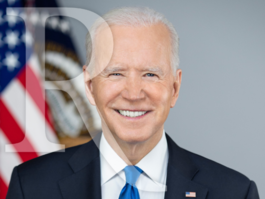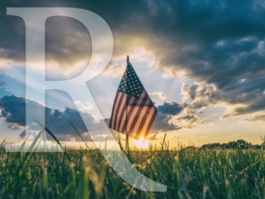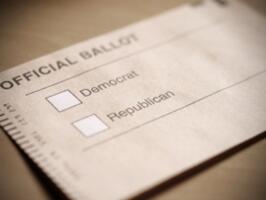What They Told Us: Reviewing Last Week’s Key Polls -- For The Week Ending May 4, 2013
The flight delay gambit didn’t work.
In response to the recent sequester spending cuts, the Federal Aviation Administration decided to furlough air traffic controllers rather than finding savings in other areas of its budget, prompting airport delays across the country. But even after the delays, only 24% of voters think the sequester cut too much, unchanged from early March just after the government spending cuts took effect. Nearly twice as many still believe the sequester didn’t cut enough.
Fifty-six percent (56%) of Americans think the federal government targets areas that hurt the public the most to increase opposition to spending cuts. Most also think Congress’ quick response to the delays highlights how the legislators look out for themselves first.
Although just 16% of Americans were personally affected by the delays or knew someone who was, Congress in rare bipartisan fashion passed legislation to stop the furloughs – and the delays. Fifty-one percent (51%) believe it is possible for the FAA to make modest spending reductions without causing flight delays.
“Congress’ quick action probably resulted from the fact that the nation’s elites were impacted rather than the public at large,” Scott Rasmussen says. “Members of Congress themselves fly home most every weekend, and members of the national media are frequent flyers. Upper-income Americans in general were far more likely to encounter a problem than those who earn less.”
In his weekly newspaper column, Scott looks at the enormous “gap between the American people and the Political Class. Those in politics take the self-serving view that they are uniquely qualified to solve the nation’s problems. Those in the general public have a much firmer grasp on reality.” He adds, “Americans recognize that they have more power acting as consumers than they do when acting as voters. That’s why they want choice. Politicians prefer a top-down approach where they write the rules. That’s the source of the disconnect.”
Case in point: Voters have consistently said for years that cost is their biggest health care concern, and 59% think free market competition would do more to reduce health care costs than more government regulation.
Voters remain closely divided in their opinions of President Obama’s national health care law. Nineteen percent (19%) say the health care law already has helped them, but 35% feel the law has hurt them instead. Forty-three percent (43%) say the law has had no impact on their lives. This marks a 10-point jump in the number of people hurt by the law since last July. There has been a four-point increase in the number helped by the law. Most of the law’s provisions will go into effect next year.
Only two percent (2%) believe members of Congress and their staff should be exempt from the health care law. Ninety-three percent (93%) feel those in Congress and their staff members should be required to live under all the rules they write for the rest of the nation.
Syria is another case in point. Most voters still oppose greater U.S. involvement in the political crisis there. But 59% of the Political Class think the United States should provide military assistance to the Syrian rebels if they have been attacked with chemical weapons. Just 31% of Mainstream voters agree.
Speaking of the Political Class, 68% of all voters believe members of Congress are overpaid. Americans are divided as to whether the nation would be better off if the best people took jobs in government or the private sector. Democrats tend to want the best people in government. Republicans and unaffiliated voters take the opposite view and want the best people working in the private sector. Overall, only five percent (5%) believe members of Congress and their staff represent the nation’s best and brightest.
Scott Rasmussen goes to both sides of the congressional aisle on this weekend’s edition of What America Thinks. He talks to Rep. Gregory Meeks, a New York Democrat, about immigration reform, and Ohio Republican Congressman Bill Johnson about the fight over the Keystone XL pipeline. We also take our cameras to the Las Vegas strip to see what Americans think about surveillance in public places in the wake of the Boston marathon bombings. What America Thinks airs on 64 stations nationwide. Find a station near you.
For the first time since before the presidential election, Republicans lead Democrats on the Generic Congressional Ballot.
The president earned his lowest job approval ratings since last August this past week in the daily Presidential Tracking Poll.
For most of the three years leading up to Election 2012, Obama’s job approval rating generally hovered around 47% or 48%. His numbers improved as Election Day neared and peaked with a post-election bounce in December to 56%. That slipped to 52% by March and 50% for the full month of April. Still, his ratings remain above where they were for most of his first term in office.
Among voters who are gun owners, just 39% approve of the way the president is doing his job. Sixty percent (60%) disapprove. The numbers are reversed among voters who don’t own a gun: 65% approve, and 32% disapprove.
One potential cloud on the horizon for the president is Benghazi. Most voters believe the murder there last year of the U.S. ambassador to Libya was a terrorist act and needs to be thoroughly investigated. But just 32% give the Obama administration good or excellent marks for its explanation of the events surrounding the ambassador’s murder.
While voters are even more critical of the president’s handling of issues related to job creation, he got a slight boost from the improved unemployment figures at week’s end.
As projected by the Rasmussen Employment Index, the government’s monthly report on job creation was an improvement from a month ago. Twenty-three percent (23%) of workers now report that their employers are hiring, while 20% report layoffs. The net hiring numbers are the most positive measured since March 2008. Still, confidence in the labor market remains well below the levels measured from 2004 through the middle of 2007.
Americans express little optimism about the job market, though. Only 29% think the unemployment rate will be lower a year from now. Just 44% now think it’s possible for anyone to work their way out of poverty in the United States.
Americans still don't think more government hiring is the answer to the country's unemployment problems. Ten percent (10%) think the government should hire those who can't find work after an extended period of time. Fourteen percent (14%) believe their unemployment benefits should be extended indefinitely, while 28% feel the government should pay for their retraining. Thirty-four percent (34%) think the government should do nothing at all for the long-term unemployed.
Forty-seven percent (47%) of Americans still think it will take more than three years for housing prices to fully recover from the downturn that began in 2008. But this is the second month in a row that this finding has dipped below the 50% mark and, generally speaking, reflects slightly more optimism than Americans have had since mid-2010.
However, Americans continue to express little short- or long-term confidence in the U.S. economy. Thirty-one percent (31%) believe the U.S. economy will be stronger a year from now, but 38% feel it will be weaker. Forty-one percent (41%) of American Adults think the economy will be stronger five years from today. In early March 2009, 64% expected the economy to be stronger in five years' time.
One-in-three (33%) adult consumers believe the U.S. economy is getting better these days. Among investors, 39% think economic conditions in the United States are improving.
In other surveys last week:
-- For the second week in a row, 30% of Likely U.S. Voters say the country is heading in the right direction.
-- Prior to this week’s arrests of three more individuals connected to the Boston Marathon bombings, many voters already believed the Tsarnaev brothers had help.
-- Twenty-eight percent (28%) of Americans think the U.S. legal system worries too much about protecting individuals rights, while 24% say it worries too much about public safety. Twenty-nine percent (29%) believe the balance is about right.
-- Fifty-nine percent (59%) believe the primary purpose for attending college is to learn the skills needed to get a better job.
-- Full-time college professors are generally regarded as politically liberal by most Americans, and only 25% believe most of these professors share the values of U.S. society.
-- Forty-nine percent (49%) of voters give the environment positive ratings, but far fewer believe it is getting better.
-- Most voters continue to think parents should be able to choose between schools based on such things as uniforms, prayer and how long the school year lasts.
Subscribers to Rasmussen Reports receive more than 20 exclusive stories each week for less than a dollar a week. Please sign up now. Visit the Rasmussen Reports home page for the latest current polling coverage of events in the news. The page is updated several times each day.
Wall Street Journal profile called Scott Rasmussen "America's Insurgent Pollster." The Washington Post described him as "a driving force in American politics." If you'd like Scott to speak at your conference or event, contact Premiere Speakers Bureau.
Remember, if it's in the news, it's in our polls.
Rasmussen Reports is a media company specializing in the collection, publication and distribution of public opinion information.
We conduct public opinion polls on a variety of topics to inform our audience on events in the news and other topics of interest. To ensure editorial control and independence, we pay for the polls ourselves and generate revenue through the sale of subscriptions, sponsorships, and advertising. Nightly polling on politics, business and lifestyle topics provides the content to update the Rasmussen Reports web site many times each day. If it's in the news, it's in our polls. Additionally, the data drives a daily update newsletter and various media outlets across the country.
Some information, including the Rasmussen Reports daily Presidential Tracking Poll and commentaries are available for free to the general public. Subscriptions are available for $4.95 a month or 34.95 a year that provide subscribers with exclusive access to more than 20 stories per week on upcoming elections, consumer confidence, and issues that affect us all. For those who are really into the numbers, Platinum Members can review demographic crosstabs and a full history of our data.
To learn more about our methodology, click here.



